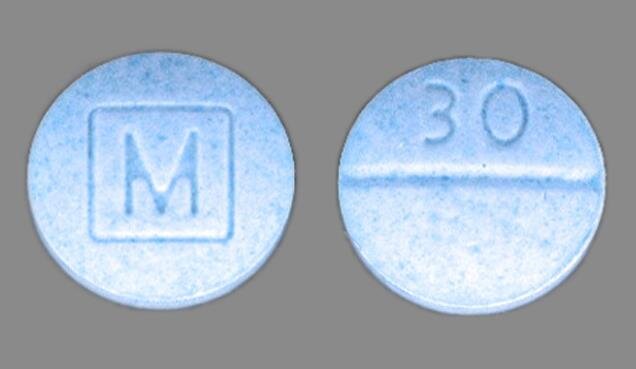Low Dose Naltrexone a ‘Game Changer’
/By Alex Smith, Kaiser Health News
Lori Pinkley, a 50-year-old from Kansas City, Mo., has struggled with puzzling chronic pain since she was 15.
She has had countless disappointing visits with doctors. Some said they couldn’t help her. Others diagnosed her with everything from fibromyalgia to lipedema to the rare Ehlers-Danlos syndrome.
Pinkley has taken opioids a few times after surgeries, but they never helped her underlying pain. Recently she joined a growing group of patients using an outside-the-box remedy: naltrexone. It is typically used to treat addiction to opioids or alcohol, in pill form or as a monthly shot.
As the medical establishment attempts a huge U-turn after two disastrous decades of pushing long-term opioid use for chronic pain, scientists have been struggling to develop safe, effective alternatives.
When naltrexone is used to treat addiction in pill form, it’s prescribed at 50 milligrams. But chronic pain patients say it helps their pain at doses of less than a tenth of that.
Low-dose naltrexone (LDN) has lurked for years on the fringes of medicine, and its zealous advocates worry it may be stuck there. Naltrexone, which can be produced generically, is not even manufactured at the low doses that seem best for pain patients.
Instead, patients go to compounding pharmacies or resort to DIY methods — YouTube videos and online support groups show people how to turn 50 mg pills into a low-dose liquid.
Some doctors prescribe it off label even though it’s not FDA-approved for pain.
University of Kansas pain specialist Dr. Andrea Nicol recently started prescribing LDN to her patients, including Pinkley. Nicol explained that for addiction patients it works by blocking opioid receptors — some of the brain’s most important feel-good regions. So it prevents patients from feeling high and can help patients resist cravings.
At low doses of about 4.5 mg, however, naltrexone seems to work differently.
“What it’s felt to do is not shut down the system, but restore some balance to the opioid system,” Nicol said.
Some of the hype over low-dose naltrexone has included some pretty extreme claims with limited research to back them, like using it to treat multiple sclerosis and neuropathic pain or even using it as a weight-loss drug.
In the past two years, however, there’s been a significant increase in new studies published on low-dose naltrexone, many strengthening claims of its effectiveness as a treatment for chronic pain, though most of these were small pilot studies.
Dr. Bruce Vrooman, an associate professor at Dartmouth’s Geisel School of Medicine, authored a recent review of low-dose naltrexone research.
Vrooman said that, when it comes to treating some patients with complex chronic pain, low-dose naltrexone appears to be more effective and well-tolerated than the big-name opioids that dominated pain management for decades.
“Those patients may report that this is indeed a game changer. It may truly help them with their activities, help them feel better.”
“Those patients may report that this is indeed a game changer,” Vrooman said. “It may truly help them with their activities, help them feel better.”
So how does it work? Scientists think that for many chronic pain patients the central nervous system gets overworked and agitated. Pain signals fire in an out-of-control feedback loop that drowns out the body’s natural pain-relieving systems.
They suspect that low doses of naltrexone dampen that inflammation and kick-start the body’s production of pain-killing endorphins — all with relatively minor side effects.
Drug Companies Not Promoting LDN
Despite the promise of naltrexone, its advocates say, few doctors know about it. The low-dose version is generally not covered by insurance, so patients typically have to pay out-of-pocket to have it specially made at compounding pharmacies.
Advocates worry that the treatment is doomed to be stuck on the periphery of medicine because, as a 50-year-old drug, naltrexone can be made generically.
Patricia Danzon, a professor of health care management at the Wharton School at the University of Pennsylvania, explains that drug companies don’t have much interest in producing a new drug unless they can be the only maker of it.
“Bringing a new drug to market requires getting FDA approval, and that requires doing clinical trials,” Danzon said. “That’s a significant investment, and companies — unsurprisingly — are not willing to do that unless they can get a patent and be the sole supplier of that drug for at least some period of time.”
And without a drug company’s backing, a treatment like low-dose naltrexone is unlikely to get the promotional push out to doctors and TV advertisements that has made household names of drugs like Humira and Chantix.
“It’s absolutely true that once a product becomes generic, you don’t see promotion happening, because it never pays a generic company to promote something if there are multiple versions of it available, and they can’t be sure that they’ll capture the reward on that promotion,” Danzon said.
The drugmaker Alkermes has had huge success with its exclusive rights to the extended-release version of naltrexone, called Vivitrol. In a statement for this story, the company said it hasn’t seen enough evidence to support the use of low-dose naltrexone to treat chronic pain and therefore is remaining focused on opioid addiction treatment.
Lori Pinkley said it’s frustrating that there are so many missing pieces in the puzzle of understanding and treating chronic pain, but she, too, has become a believer in naltrexone.
She’s been taking it for about a year now, at first paying $50 a month out-of-pocket to have the prescription filled at a compounding pharmacy. In July, her insurance started covering it.
“I can go from having days that I really don’t want to get out of bed because I hurt so bad,” she said, “to within a half-hour of taking it, I’m up and running, moving around, on the computer, able to do stuff.”
A recent review by British researchers found that LDN is safe to use and more clinical studies are needed on its potential uses. PNN readers have shared their positive experiences using LDN to treat Interstitial Cystitis and fibromyalgia.
The LDN Research Trust includes a list of LDN-friendly doctors and pharmacies on its website.
This story is part of a partnership that includes KCUR, NPR and Kaiser Health News, a nonprofit news service covering health issues. KHN is an editorially independent program of the Kaiser Family Foundation, which is not affiliated with Kaiser Permanente.




























